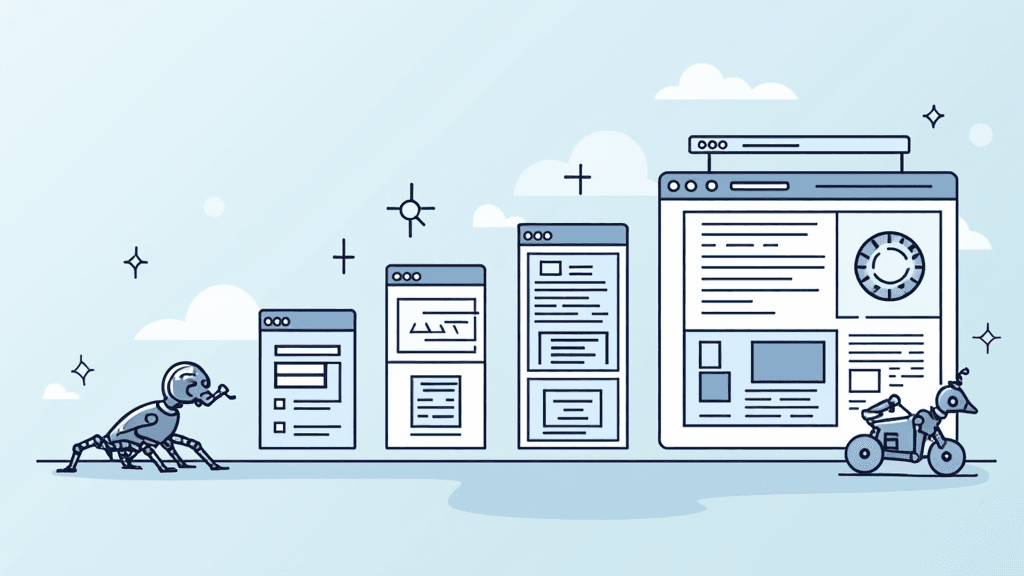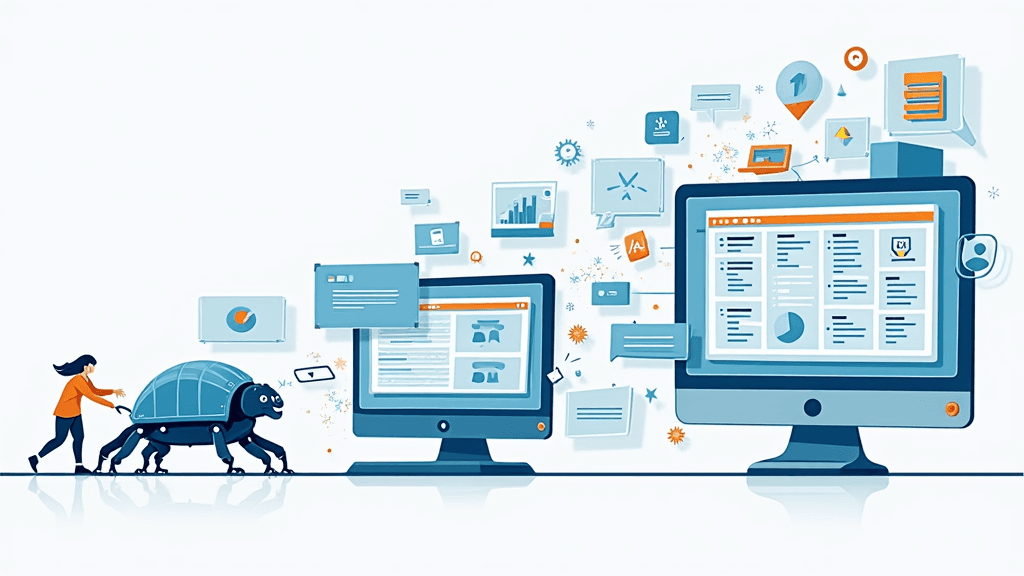The Evolution of Web Scraping: From Crawlers to AI
Discover how web scraping evolved from basic crawlers to AI-driven systems, tackling dynamic content, anti-bot measures, and intelligent data extraction.
Posted by
Related reading
Comparing Business Enrichment Tools: The Ultimate Guide for 2025
Discover how modern business enrichment tools stack up against each other. Learn about key features, pricing models, data quality, and find out which solution offers the best ROI for your specific needs.
How to Build a Google Maps Business Directory Without Coding Skills
Learn how to create a comprehensive Google Maps business directory without any development skills using AI-powered tools like AskMyBiz that automate data extraction and enrichment.
Building Scalable Business Intelligence Systems
Discover the architecture behind scalable BI systems, including parallel processing, API design, and best practices for large-scale data collection.

Introduction
Web scraping has come a long way since its inception. What started as basic HTML parsing has evolved into sophisticated, AI-driven systems capable of extracting meaningful insights from complex websites. This article delves into the technical evolution of web scraping, key challenges, and how AI has revolutionized this field.
The Beginnings: Basic HTML Parsing
Early web scraping was rudimentary, relying on simple tools to fetch and parse HTML content. These scripts could extract plain text and basic tags but struggled with:
- Dynamic websites requiring JavaScript rendering.
- Large-scale data extraction.
- Variability in web structures and formatting.
Challenges in Modern Web Scraping
As websites became more dynamic, traditional scraping tools faced new hurdles:
- JavaScript rendering: Many websites now rely on JavaScript to load critical content, requiring tools to mimic browser behavior.
- Anti-bot measures: Captchas, rate limits, and bot-detection algorithms challenge scalability.
- IP rotation: To avoid being flagged, scrapers need sophisticated IP rotation strategies.

The AI Revolution in Web Scraping
Artificial intelligence has addressed many of these challenges, enabling smarter, more efficient data collection. Key innovations include:
- Dynamic content rendering: AI-driven systems simulate human browsing, allowing seamless navigation of JavaScript-heavy sites.
- Content relevance identification: Machine learning models prioritize extracting business-critical information, such as legal policies or executive details.
- Anti-bot circumvention: AI models adapt scraping patterns to mimic human interaction, reducing detection risks.
For example, tools like AskMyBiz process websites in seconds, extracting and structuring data into usable formats.
Shifting from Quantity to Quality
Traditional scraping aimed to gather massive datasets, often sacrificing relevance and quality. Modern approaches emphasize:
- Quality over quantity: Focusing on actionable, structured data rather than bulk collection.
- Semantic understanding: Using natural language processing to extract contextually relevant information.
Future Trends in Intelligent Data Collection
The future of web scraping lies in deeper integration with AI and automation. Key trends include:
- Real-time scraping: Automated systems will update datasets dynamically as new information becomes available.
- Ethical scraping: Increased emphasis on compliance with data privacy regulations like GDPR.
- Enhanced collaboration: Integration with CRMs and business intelligence tools to provide seamless insights.
Conclusion
Web scraping has evolved from basic HTML crawlers to intelligent AI-powered systems capable of extracting high-quality, structured data. As the field continues to advance, businesses will increasingly rely on automated tools to navigate the complexities of modern web data collection.